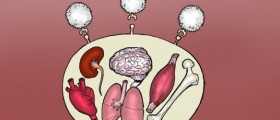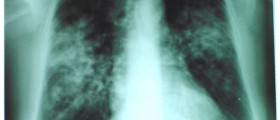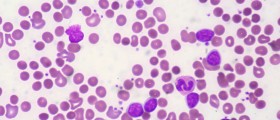
Sepsis is very severe and potentially lethal medical condition characterized by inflammation of whole body. Sepsis is also known under the name “blood poisoning”. This condition is also known as a systemic inflammatory response syndrome, which frequently occurs as a response of the immune system to infection or as a result of sepsis. Sepsis occurs in a presence of known or suspected infection and usually as a reaction of the immune system to microbes found in the blood, urine, and various tissues and organs. In most cases, patients will need to be hospitalized in the intensive care unit, and receive antibiotics and intravenous fluids, to prevent complications.Signs and symptoms of chronic sepsis
Sepsis is always characterized by inflammation that affects the whole body. As in any other kind of inflammatory reaction, the immune system reacts by changes in the body temperature and the levels of white blood cells, leukocytes. In some patients, the level of leukocytes will be elevated, and they may have very high fever. Other patients will have low levels of white blood cells, and their bodily temperature will fall below the average. Systemic inflammatory response syndrome is characterized by elevated heart rate, reaching more than 90 beats per minutes. Respiratory rate is also elevated and a blood test in most cases reveals a presence of the pathogen that provokes the inflammatory response.
Diagnostic criteria for chronic sepsis
Sepsis is diagnosed by the presence of two or more associated symptoms:Hypothermia or fever: body temperature lower than 97 °F/36 °C or higher than 100 °F/38 °CElevated heart rate, at more than 90 beats per minuteElevated respiratory rate, at more than 20 breaths per minuteAbnormal white blood cell count – more than 12,000 cells/mm3 or less than 4,000 cells/mm3
Causes of chronic sepsis
In most of the cases, the cause of sepsis is bacteria such as Escherichia coli, Listeria monocytogenes, Neisseria meningitidis, Streptococcus pneumoniae, Haemophilus influenzae type b, Salmonella, and Group B streptococcus (GBS). This is especially common in neonatal sepsis, which occurs in an infant younger than 90 days old.
Normally, immune system fights against the infections by triggering the inflammation in the body. Sometimes, this process can become exaggerated and the inflammation spreads from the infection site to the rest of the body. During this crisis, the small clots start forming inside of the blood vessels, and the inflammatory response prevents body’s natural ability to dissolve blood clots. As a result, the heart works under a lot of pressure to pump blood, and the clots prevent oxygen from reaching the organs. The final outcome is failure of the organs.
- www.cdc.gov/sepsis/index.html
- www.nhs.uk/conditions/sepsis/
- Photo courtesy of Nephron by Wikimedia Commons: commons.wikimedia.org/wiki/File:Chronic_sialadenitis.jpg

















Your thoughts on this
Loading...